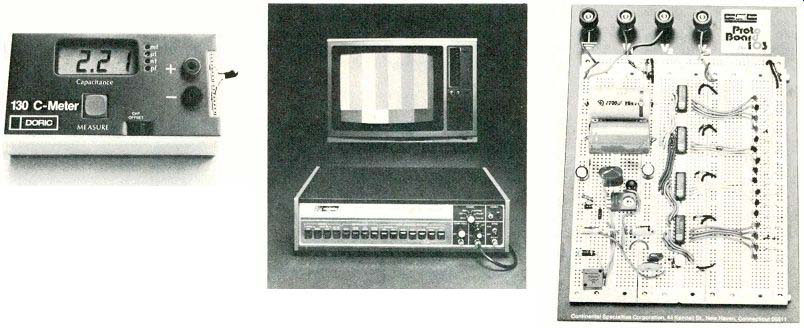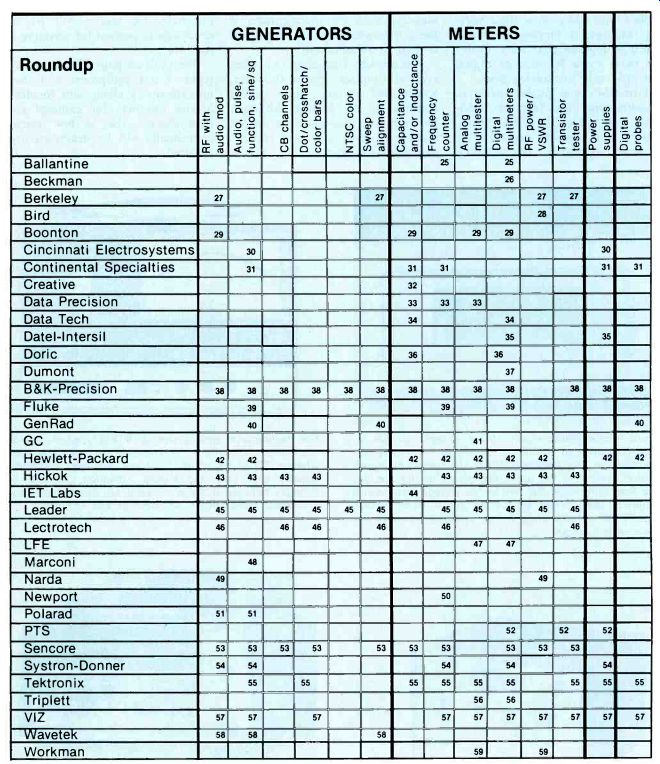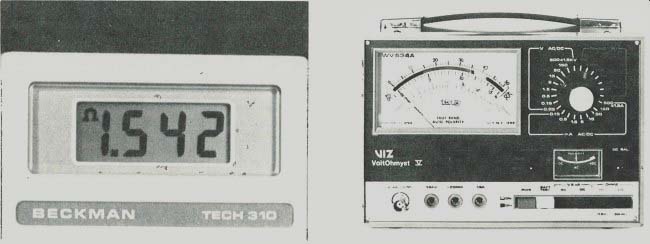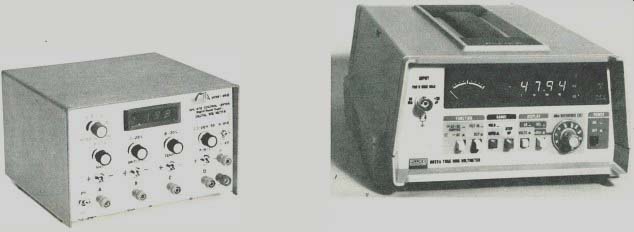Electronic test equipment has advanced in step with the significant improvements of radios, television receivers, tape recorders and stereo machines over the years. This peaceful revolution has occurred quietly, one small item at a time, so the extent and importance of these changes are not apparent until a comparison is made between equipment at the beginning of modern instrumentation and the sophisticated test equipment of today.
First generation
The first generation of improved test equipment included FET multi-meters that gave better stability with decreased drain (thus making battery operation practical), sweep-alignment generators with multiple post-injected crystal-controlled markers, color-bar/crosshatch generators with count-down ICs for permanently locked dividers, and improved transistor testers that could be operated rapidly either in-circuit or out-of-circuit.
Other generations followed with more features and improvements.
Probably the most spectacular external change was the introduction of digital/analog converters with digital-readout displays. These were made possible by Large-Scale Integration (LSI) ICs which crowd thousands of transistors into a small package. The result was unprecedented accuracy at reasonable cost.

---------- Pictured is the Doric model 130 capacitance tester. Ten
or more models are offered by other manufacturers. A few (such as the
Doric) are autoranging, and most measure capacitance alone by displaying
each accurate result on a digital readout. Sencore has two models (see
Test Lab this month) that auto-range and check leakage. The ESR Meter
from Creative Electronics measures the ESR of capacitors to give a rapid
and depend able test of bad electrolytics.
--------- B&K-Precision model 1250 color generator (pictured) produces high-accuracy NTSC color patterns suitable for servicing videotape recorders and other video machines. Sencore VA-48 has color-bar and frequency burst patterns for videotape servicing.
--------Digital experiments or home-built gad gets are produced easier and more accurately by a modern breadboard, such as this Continental Specialties model 103.

----------- Circle numbers listed above on Reply card for more information.
For example, older volt-ohmmeters (VOMs) typically had ac curacy ratings between 3% and However, with a drifted zeroing adjustment and parallax error, the true accuracy often was no better than ±.10%. Contrast those figures to digital multimeters with ratings between ± 0.1% and ± 0.5%. Even more important than accuracy, in many cases, are those digital displays that are direct reading, with correct decimal placement and automatic positive or negative signs. And digital multi-meters sometimes sell for about the same price as analog types.
Digital circuitry is very common in modern test equipment. How ever, digital readouts are not very effective when presented with a varying input signal. Don't judge the worth of any instrument solely on whether or not it has digital circuitry. There are other important considerations.
Digital ohmmeters, for example, are usually not efficient at identifying rapid and small variations of resistance. Some manufacturers furnish an extra test. One multimeter emits an audio tone when continuity is established; another rapidly lights an ohm symbol. A few digital multimeters have auxiliary analog meters (perhaps without calibrations) which show those varying readings. If varying or erratic readings degrade your tests, examine these extra features of digital instruments or use analog types.
True-RMS and peak-to-peak ac measurements are features previously unheard of in digital multi-meters, but they are beginning to become available in selected models. Check the specifications, if these measurements are important to your troubleshooting.
It is unlikely that digital circuitry ever will replace scopes (however, scopes will include more digital features in the future). Although the emphasis this month is not on scopes, it is true they have reached new heights of performance. This is fortunate, for scopes will be increasingly important for servicing in the future.
The table on page 19 lists generic types of test equipment and their manufacturers along with Reader's Service numbers for catalogs and data sheets. Also, a few unique instruments will be described and pictured.

------------- Several digital multimeters provide a rapid audible
or visual indication of continuity to help in the location of intermittents.
The Beckman TECH-310 (pictured) shows an ohm symbol in the upper left
corner of the display. Data Precision model 936 has an overvoltage alarm
and a continuity beep, while an audible signal from Weston model 6100
meter sounds for dc voltages or continuity below certain ranges.

-------- Metered power supplies are becoming a necessity for voltage
substitution during troubleshooting or for testing modules and other
components out of the machine. PTS Electronics model DG-5 features four
adjustable-voltage supplies which can provide either positive or negative
voltage. The built-in digital voltmeter can monitor any of the four supplies
or be switched to jacks for external tests.
----------- For technicians who prefer a VTVM-type of analog multimeter, VIZ offers the super-deluxe WV-534A Volt Ohmyst M. Some of the features include: automatic polarity with plus and minus indication, ac and dc voltages between 0.05V and 1500V full scale, high- and low-power ohms ranges, and both dc and ac current.
---------A few digital multimeters now measure decibels, true RMS and peak or peak-to-peak ac voltages. The Fluke digital multimeter models 8010A and 8012A measure true RMS ac values. The 8920 series (pictured) does not measure dc but reads true RMS voltages up to 20MHz, or dBs at many impedances. Ballantine 3030A accurately reads average, peak, true RMS or decibels. The microprocessor controlled Sencore DVM-56 (to be available in January) measures peak-to-peak, average, true RMS or decibels. Models 248, 258 and 248OR from Data Precision are 4 1/2-digit multimeters that measure true RMS.
Also see: Test equipment REPORT